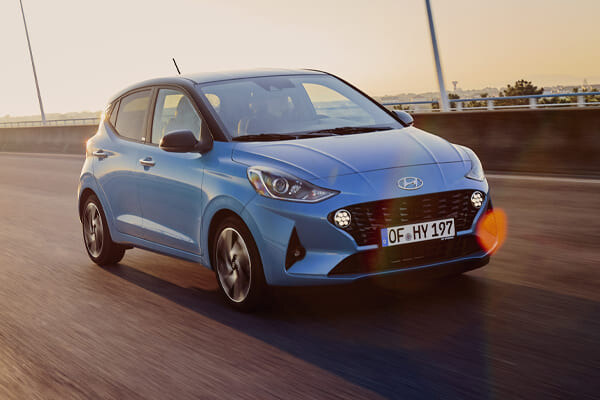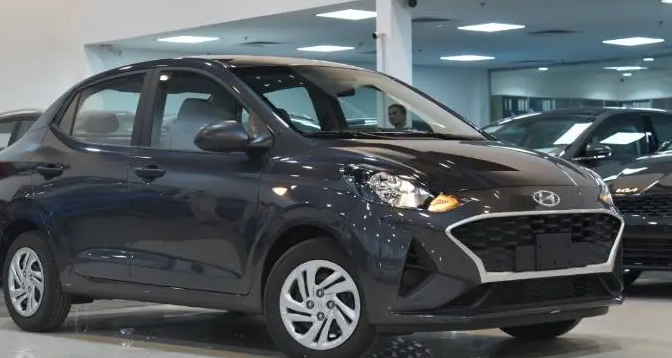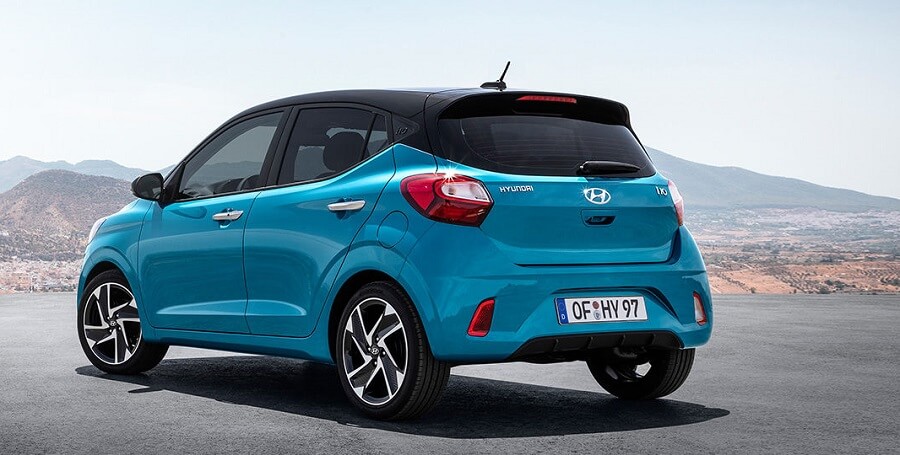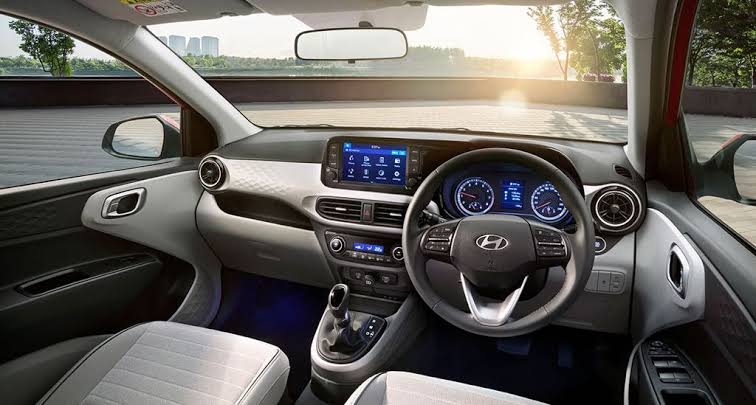The Hyundai i10 is a comfortable and capable city car, offering good on-board technology and useful practicality, although it comes at a cost.
The Hyundai i10 is a strong contender in the shrinking city car market. Improvements to on-board technology, more cabin space, and a sleeker, sportier look will tempt some, but the i10 still can’t compete with rivals on performance and running costs.
The i10 feels comfortable on the go and should fit seamlessly into everyday life, though high prices and a bland interior will appeal to it – particularly with style-conscious customers looking for an unconventional urban ride.
Hyundai has decided to give the i10 a real boost as a city car competitor. Under the restyled body, this third-generation model sits on an all-new platform, which sees increased width and a slightly lowered stance.
All this makes for a sporty look, while the Korean manufacturer has also managed to conjure a 40mm longer wheelbase, which means more interior space. Updated technology is also welcome on board and helps make the five-door i10 feel even more modern.
Although the i10’s city car competition is reduced (the Toyota Aygo, Citroen C1 and Peugeot 108 are no longer available), it is still essential that the i10 can prove itself against the alternatives. Affordability is key for city car customers, so models like the brilliant Kia Picanto and the petrol-powered Volkswagen! It will be on the mind of many buyers, while there are less expensive versions of larger superminis in the class above, which tend to outperform city cars in terms of size and sophistication.
The i10 range features three standard petrol engine options, with no hybrid or fully electric versions available. A 1.0-litre three-cylinder MPi unit with 66bhp is the entry point into i10 ownership, followed by a 1.2-litre four-cylinder engine producing 83bhp. The 1.0 T-GDi engine delivers a best-in-class 99bhp. All cars feature a five-speed manual gearbox, while the 66bhp and 83bhp variants also offer an automated manual transmission.
The trim level range no longer includes the SE entry, which leaves the SE Connect and Premium versions covering the core of the range, with the sporty N-Line only offered with the 1.0 T-GDi engine. Standard kit includes Bluetooth, DAB radio, multi-function steering wheel and 8.0-inch touchscreen.

Ultimately, though, sales success will come down to price, and with an entry point of around £15,000, the i10 arguably isn’t the value it once was, leading buyers into thinking there’s better value to be found. It is in the supermini category with the likes of Renault Clio, Ford Fiesta and Dacia Sandero at discounted prices.
Motor performance in the Hyundai i10
The Hyundai i10 offers average performance, while automatic versions should be avoided
Hyundai has adopted a new platform for the i10, although the suspension includes the usual front struts and rear torsion beam design. The level of refinement has improved compared to the outgoing model, although it can feel unstable due to the winding, uneven tarmac, with its firm chassis making it a bit jittery.

The i10 is definitely smoother when you get up to speed, but you won’t find much feedback through the steering wheel. However, it offers good weight, probably acceptable for the age of a city car.
The 66bhp 1.0-litre engine isn’t as happy with acceleration, meaning the i10 doesn’t feel as lively as some of its more dynamic rivals, but reasonable levels of torque mean it’s more agile in the mid-range. In fact, during our in-gear testing of the i10, it topped the Kia Picanto and Toyota Aygo, taking ten seconds to accelerate from 30 mph to 70 mph – a more reasonable time than the increment that more closely reflects real-world driving.
Outright performance won’t be a major consideration for those looking for a city car, and the i10 is better suited to life in city traffic. The 66bhp 1.0-litre five-speed manual version is a particularly slow runner, taking 14.8 seconds from 0-62mph. Customers who opt for the automated manual will likely not see the speed limit reach 62 mph, as it takes a ridiculous 17.8 seconds to reach the mark from a standstill.
The advice is clear – avoid the Hyundai i10 with an automated manual transmission if you value the ability to keep up with traffic. Top speed on this model is almost redundant, but it can reach 97 mph in theory, if you can find a long enough driveway.
The 83bhp 1.2-litre MPi is a little more convincing, needing 12.6 seconds to reach 62mph and a maximum of 106mph. Unsurprisingly, the quickest is the 99bhp 1.0 T-GDI, which makes the same dash in 10.5 seconds.

Luxuries in the Hyundai i10
The i10’s design has been improved, with Hyundai giving its smallest car a sharper, sportier look – thanks in part to a 20mm lower stance and a 20mm increase in overall width.
There is an opportunity to customize your i10, with a choice of seven exterior paint colours. Mangrove Green Pearl is standard, while other variants will add another £550 (excluding £300 of solid Polar White paint finish). Premium and N Line versions offer two-tone roof options, while all cars, except those specified with N Line, feature body-colored bumpers and mirrors.
Although no longer on the price list, SE versions feature decent levels of standard equipment, so if you can bag a used model you’ll benefit from air conditioning, cruise control, Bluetooth, DAB radio and a leather-trimmed, multi-spoke steering wheel. Jobs. The SE Connect trim adds 15-inch alloy wheels, a rearview parking camera, and an 8.0-inch touchscreen.
The top-of-the-line Premium line offers larger 16-inch wheels, upgraded upholstery, a heated steering wheel, and heated front seats. Sporty N Line variants include a unique 16-inch alloy wheel design, LED taillights, branded exterior/interior trim, and black cloth seats with red stitching.
SE Connect versions and above feature an 8-inch touchscreen with Android Auto and Apple CarPlay. This works well, with good graphics and plenty of screen space to show lots of information.
Satellite navigation and a wireless smartphone charging pad are available as part of the optional Technology Package, which also includes Bluelink – Hyundai’s online system that gives drivers additional controls and features via a smartphone app.
Although it has grown in size compared to its predecessor, the i10 is still easy to drive and thread around busy city streets. Visibility is good and all cars feature driver seat height adjustment in addition to electrically operated mirrors. Parking, even in the tightest of spaces, shouldn’t be a problem – especially if you opt for the SE Connect trim, which features a rearview camera.
The emphasis on practicality continues with ample storage for odds and ends, a bottle holder in the center console and good-sized door bins, while the rear seats have a 60:40 split-folding function.
Opting for the Premium model adds a big-car feel to the cabin and enhances the comfort levels on offer. It adds upgraded cloth upholstery, heated seats and a heated steering wheel.

Safety features in the Hyundai i10
Hyundai has a strong performance in Driver Power’s customer satisfaction survey, although the manufacturer will be disappointed with the i10’s Euro NCAP safety rating
The i10 was voted 62nd (on a list of 75 cars) in the 2022 Driver Power customer satisfaction survey, while the Hyundai brand was also represented in the survey by the Kona and Ioniq models. The manufacturer improved on its 13th place finish in 2021 with an 11th place finish in 2022, ahead of Nissan, Volkswagen and Skoda.
When safety tested by Euro NCAP in 2014, the previous i10 model achieved a rating of just four stars (out of a maximum five). It lost marks in the Safety Assistant category, due to not all safety tools being available as standard.
Hyundai has addressed the safety suite issue in the latest car with a suite of active equipment for all cars, including autonomous emergency braking, brake assist, driver alert, and lane assist with lane departure warning system. Only the Intelligent Speed Limit Warning system is optional – available in Premium and N Line versions.

It’s worth noting that the Euro NCAP testing procedure is more stringent than in previous years, which goes some way to explaining why the i10 received a three-star rating when tested back in 2020. That’s the same score as Volkswagen!, but there’s still concern. Although the safety report highlights key issues, particularly regarding driver protection in the event of a side collision.
Hyundai i10 price
Hyundai i10 price Model 2019 $ 9,500




